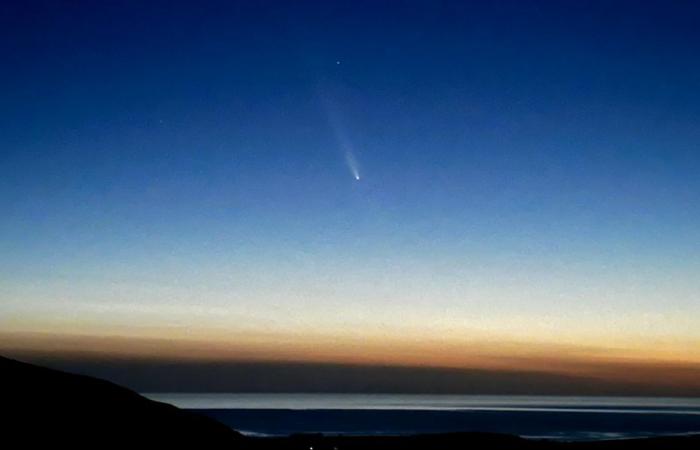Visible since this weekend in the northern hemisphere, comet Tsuchinshan-Atlas was observed this Sunday early evening on the island.
The essentials of the day: our exclusive selection
Every day, our editorial team reserves the best regional news for you. A selection just for you, to stay in touch with your regions.
France Télévisions uses your email address to send you the newsletter “Today’s essentials: our exclusive selection”. You can unsubscribe at any time via the link at the bottom of this newsletter. Our privacy policy
Announced as the “comet of the century” by certain specialists, it was seen this Sunday, October 13 in the sky over Corsica.
Images of the one who was named C/2023 A3 Tsuchinshan-Atlas shows a light trail appearing to split the atmosphere.
On the island, particularly on the western facade, several people shared their photos taken last night at nightfall.
The comet was observed in several places on the island, such as here at the Col de Saint-Antoine, above Ajaccio.
•
© FTV/
Visible to the naked eye in the northern hemisphere since this weekend, this comet was first detected in January 2023 by the Chinese observatory Tsuchinshanfrom which it takes part of its name. The other part owes it to the South African telescope of the Atlas program which then confirmed its existence.
Its rigorous nomenclature was seen again Friday evening in North America, reports Eric Lagadec, astrophysicist at the Côte d’Azur Observatory, to AFP.
In the meantime, “we could not observe it when it was between the Earth and the Sun”, where it risked disappearing following the solar storm that reached Earth last Thursday, causing the Northern Lights.
Nightfall remains the best time to best see this small body of rock and ice. “A little higher each evening in the sky”says the astrophysicist, it will be observable by looking to the West “for ten days”he believes, before “lower the brightness a little each day” as it moves away from the sun.
The Tsuchinshan-Atlas comet is presented by some scientists as that of the “century”.
•
© FTV/
According to the astrophysicist, if it does not encounter any obstacles in its path, comet Tsuchinshan-Atlas will follow an orbit which should not bring it closer to Earth for 80,000 years.
With AFP






